Mazda CX-60 vs Nissan Qashqai – Differences & prices compared
Compare performance, boot space, consumption and price in one view.
Find out now: which car is the better choice for you – Mazda CX-60 or Nissan Qashqai?
The Mazda CX-60 (SUV) comes with a Plugin Hybrid or Diesel MHEV engine and Automatic transmission. In comparison, the Nissan Qashqai (SUV) features a Petrol MHEV or Full Hybrid engine with Manuel or Automatic transmission.
When it comes to boot capacity, the Mazda CX-60 offers 570 L, while the Nissan Qashqai provides 504 L – depending on how much space you need. If you’re looking for more power, decide whether the 327 HP of the Mazda CX-60 or the 190 HP of the Nissan Qashqai suits your needs better.
In terms of consumption, the values are 1.40 L per 100 km for the Mazda CX-60, and 5.10 L for the Nissan Qashqai.
Price-wise, the Mazda CX-60 starts at 41900 £, while the Nissan Qashqai is available from 29400 £. Compare all the details and find out which model fits your lifestyle best!
In the competitive compact SUV segment, the Mazda CX-60 stands out with its premium interior and sporty handling, appealing to those who prioritize driving dynamics. Meanwhile, the Nissan Qashqai offers practicality and advanced technology features, making it a strong contender for families seeking comfort and convenience. Ultimately, the choice between these two models hinges on whether buyers value performance or versatility more in their daily drives.
Mazda CX-60
The Mazda CX-60 exudes a sense of elegance and sophistication with its sleek design and refined styling. Inside, the cabin offers a harmonious blend of comfort and advanced technology, ensuring an enjoyable driving experience. On the road, the CX-60 delivers impressive performance and handling, making it a standout choice for those who appreciate driving dynamics.
details @ de.mazda-press.com
@ de.mazda-press.com
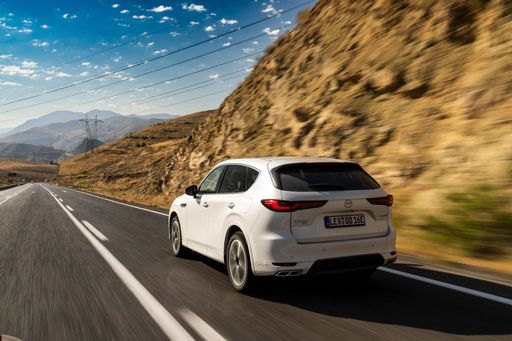 @ de.mazda-press.com
@ de.mazda-press.com
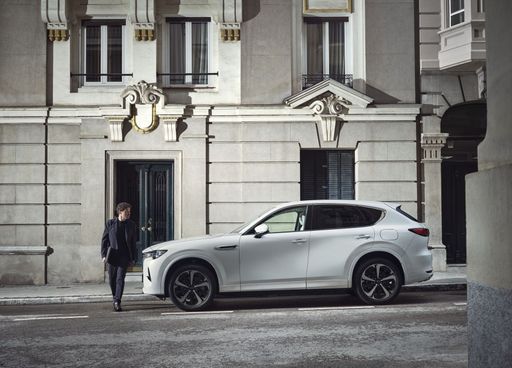 @ de.mazda-press.com
@ de.mazda-press.com
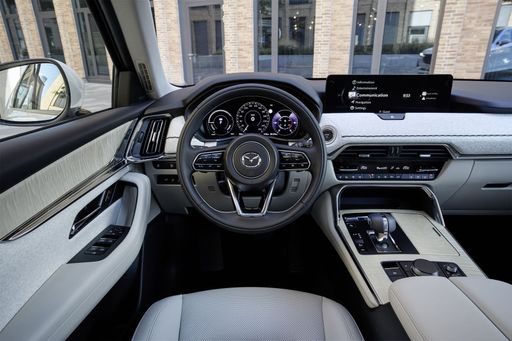 @ de.mazda-press.com
@ de.mazda-press.com
Nissan Qashqai
The Nissan Qashqai stands out in the compact SUV market with its sleek design and versatile features. Its smooth ride and refined interior make it a popular choice for both city driving and weekend adventures. Advanced safety technologies and user-friendly infotainment add to its appeal, ensuring a comfortable and secure driving experience for all passengers.
details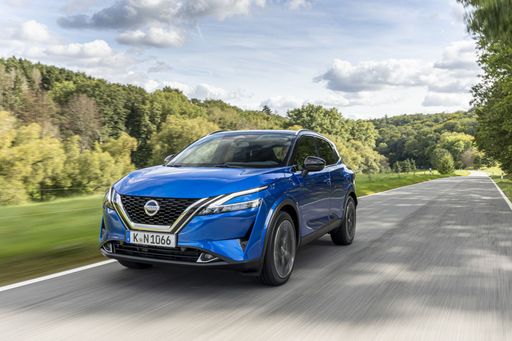 @ Nissan
@ Nissan
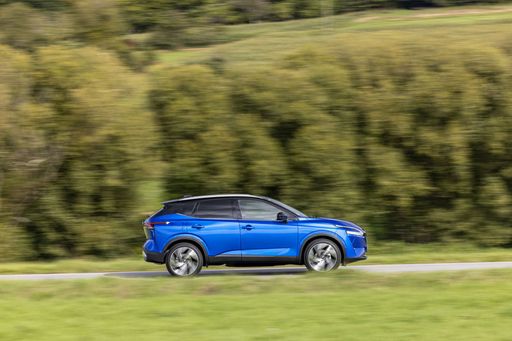 @ Nissan
@ Nissan
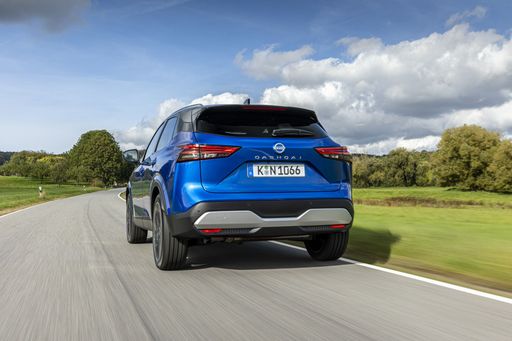 @ Nissan
@ Nissan
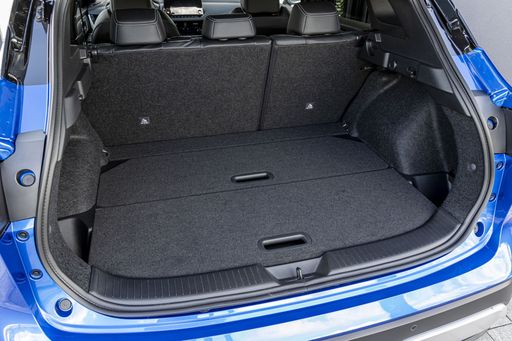 @ Nissan
@ Nissan
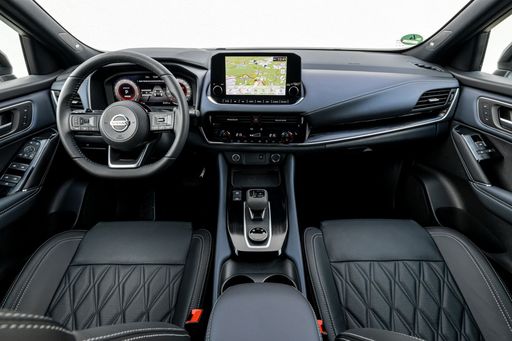 @ Nissan
@ Nissan
The rapidly evolving automotive landscape presents consumers with a plethora of choices, especially in the competitive compact SUV segment. Two standout vehicles vying for attention are the Mazda CX-60 and the Nissan Qashqai. Each brings unique features, cutting-edge technology, and performance capabilities that cater to different preferences. In this article, we will delve into a comprehensive comparison of these two models, examining various technical aspects and innovations.
Design and Dimensions
The Mazda CX-60 showcases a bold and sporty design characterized by its dynamic, sleek lines and a muscular stance. With a length of 4745 mm, width of 1890 mm, and a height ranging from 1680 mm to 1688 mm, it offers a substantial presence on the road. The five-door layout seamlessly blends aesthetics with functionality, ensuring ample cabin space for passengers and cargo.
On the other hand, the Nissan Qashqai, measuring 4425 mm in length and 1835 mm in width while standing at 1625 mm in height, presents a more compact and agile silhouette. Also featuring a five-door configuration, it is ideal for urban environments where maneuverability is key. The Qashqai’s design emphasizes modern lines and a refined front fascia, appealing to a wide demographic.
Powertrains and Performance
The Mazda CX-60 offers an array of engine options, including a powerful 327 HP plug-in hybrid system, a diesel MHEV with up to 200 HP, and a potent 254 HP gasoline variant. Coupled with advanced automatic transmissions, the CX-60 provides a seamless driving experience across varying terrains. Notably, the plug-in hybrid variant boasts an impressive electric range of 64 km, catering to eco-conscious drivers.
In contrast, the Nissan Qashqai is equipped with petrol MHEV and full hybrid options, producing power outputs ranging from 140 HP to 190 HP. With a choice of manual and automatic transmissions (CVT), the Qashqai is designed for both performance and efficiency. The acceleration figures reveal that while the Qashqai can achieve 0-100 km/h in as fast as 7.9 seconds, it traditionally lags behind the CX-60’s top-performing models.
Fuel Efficiency and Emissions
When it comes to fuel consumption, the Mazda CX-60 shines with dramatically low figures, particularly in its hybrid variant, which achieves an astounding 1.4 L/100km. The diesel variant also performs admirably, consuming around 5 L/100km. This efficiency contributes significantly to its lower emissions, with CO2 figures starting from just 31 g/km.
The Nissan Qashqai's fuel consumption ranges from 5.1 to 6.8 L/100km, depending on the selected engine and configuration. Its emissions range between 116 g/km and 154 g/km, indicating that while it is efficient, it does not quite match the CX-60 in this regard.
Interior and Technology
Both vehicles impress with their interiors, highlighting modern design, quality materials, and advanced technology. The CX-60 boasts a spacious cabin with a trunk capacity of 570 liters, providing ample room for luggage and everyday items. Technological innovations include a user-friendly infotainment system and advanced driver assistance features designed to enhance safety and comfort.
Similarly, the Nissan Qashqai offers a comfortable interior with refined finishes and practicality. The trunk space measures between 479 and 504 liters, accommodating various cargo needs. The Qashqai stands out with its cutting-edge technology, offering a comprehensive suite of safety features and an intuitive infotainment system to keep drivers connected.
Driving Experience
The Mazda CX-60 is constructed with a focus on engaging driving dynamics, delivering exceptional handling thanks to its rear-wheel drive layout in some variants and advanced all-wheel drive options. It caters to enthusiasts looking for a spirited and responsive driving experience, especially with its acceleration capabilities, reaching 0-100 km/h in as quick as 5.8 seconds.
Conversely, the Nissan Qashqai, while providing a composed ride, emphasizes comfort and practicality over sportiness. Its handling is surprisingly responsive for its segment, with various driving modes allowing drivers to tailor the experience based on road conditions. However, it does not exhibit the same level of athleticism as the CX-60.
Conclusion
In conclusion, both the Mazda CX-60 and Nissan Qashqai offer compelling options within the compact SUV market. The CX-60 excels in terms of performance, efficiency, and driving engagement, making it an enticing option for those seeking a robust driving experience. In contrast, the Qashqai prioritizes comfort and urban practicality, appealing to a broader audience seeking a reliable daily driver.
Ultimately, the choice between these two vehicles hinges on individual preferences—whether one desires a sportier drive with advanced hybrid technology or a comfortably equipped SUV tailored for everyday ease. Both models undoubtedly deliver exceptional value in their respective niches.

|

|
|
|
|
Costs and Consumption |
|
|---|---|
|
Price
41900 - 56800 £
|
Price
29400 - 42500 £
|
|
Consumption L/100km
1.4 - 5.4 L
|
Consumption L/100km
5.1 - 6.8 L
|
|
Consumption kWh/100km
-
|
Consumption kWh/100km
-
|
|
Electric Range
64 km
|
Electric Range
-
|
|
Battery Capacity
-
|
Battery Capacity
-
|
|
co2
31 - 139 g/km
|
co2
116 - 154 g/km
|
|
Fuel tank capacity
50 - 58 L
|
Fuel tank capacity
55 L
|
Dimensions and Body |
|
|---|---|
|
Body Type
SUV
|
Body Type
SUV
|
|
Seats
5
|
Seats
5
|
|
Doors
5
|
Doors
5
|
|
Curb weight
1890 - 2055 kg
|
Curb weight
1420 - 1665 kg
|
|
Trunk capacity
570 L
|
Trunk capacity
479 - 504 L
|
|
Length
4745 mm
|
Length
4425 mm
|
|
Width
1890 mm
|
Width
1835 mm
|
|
Height
1680 - 1688 mm
|
Height
1625 mm
|
|
Payload
581 - 612 kg
|
Payload
466 - 520 kg
|
Engine and Performance |
|
|---|---|
|
Engine Type
Plugin Hybrid, Diesel MHEV
|
Engine Type
Petrol MHEV, Full Hybrid
|
|
Transmission
Automatic
|
Transmission
Manuel, Automatic
|
|
Transmission Detail
Automatic Gearbox
|
Transmission Detail
Manual Gearbox
|
|
Drive Type
All-Wheel Drive, Rear-Wheel Drive
|
Drive Type
Front-Wheel Drive, All-Wheel Drive
|
|
Power HP
200 - 327 HP
|
Power HP
140 - 190 HP
|
|
Acceleration 0-100km/h
5.8 - 8.4 s
|
Acceleration 0-100km/h
7.9 - 10.2 s
|
|
Max Speed
200 - 219 km/h
|
Max Speed
170 - 206 km/h
|
|
Torque
450 - 550 Nm
|
Torque
240 - 330 Nm
|
|
Number of Cylinders
4 - 6
|
Number of Cylinders
3 - 4
|
|
Power kW
147 - 241 kW
|
Power kW
103 - 140 kW
|
|
Engine capacity
2488 - 3283 cm3
|
Engine capacity
1332 - 1497 cm3
|
General |
|
|---|---|
|
Model Year
2024
|
Model Year
2024
|
|
CO2 Efficiency Class
B, D, E
|
CO2 Efficiency Class
E, D
|
|
Brand
Mazda
|
Brand
Nissan
|
Mazda CX-60
The Allure of the Mazda CX-60
Exploring the burgeoning SUV market, the Mazda CX-60 presents itself as a unique contender by combining sophisticated design, powerful performance, and pioneering technology. This British article delves into the detailed intricacies of the CX-60, providing an all-encompassing view of what makes this model stand out.
Engines That Lead the Class
The Mazda CX-60 comes equipped with a choice of pioneering engines including the Plug-in Hybrid and Diesel Mild-Hybrid. Whether you prefer the dynamic 327 PS earmarked with the Plug-in Hybrid or the reliable Diesel option delivering up to 254 PS, the range satisfies a diverse array of performance needs. These engines marry power with efficiency as evidenced by fuel consumptions ranging from as low as 1.4 L/100km to 5.4 L/100km—a remarkable feat in the SUV category.
Plug-In Hybrid: A Modern Marvel
The Plug-in Hybrid engine grabs attention with its e-Skyactiv technology, allowing for an electric range of 64 km, making short urban journeys effortlessly emission-free. Paired with an automatic all-wheel drive system, it provides swift acceleration from 0-100 km/h in just 5.8 seconds, while boasting a fuel efficiency that sets a new standard in hybrid innovation.
Diesel Option for the Road Warriors
For enthusiasts who crave longer journeys, the Diesel Mild-Hybrid variant stands steady. Available in both rear-wheel and all-wheel drive configurations, this engine combines an optimal balance of performance and economy. The most robust option, powered by a 3.3-litre six-cylinder formation, is engineered to deliver a smooth ride with a refined power output.
Interiors Crafted for Comfort
The Mazda CX-60 reveals an interior that speaks of luxury and meticulous craftsmanship. With seating for five, the cabin area is accentuated by options including the Takumi line, which couples elegant design with modern technology. Emphasising driver and passenger comfort, the seating materials and arrangement reflect Mazda's dedication to excellence and ergonomics.
Technological Triumphs
At the heart of Mazda's innovation, the CX-60 incorporates a series of technology enhancements aimed at elevating the driving experience. The inclusion of advanced safety features provides reassurance while cutting-edge infotainment systems ensure connectivity without compromising on design.
The Bottom Line
The Mazda CX-60, with a price range of €47,390 to €61,550, offers tremendous value for an SUV of its class. With a clever mix of technology, style, and performance, it becomes clear why this model is leading its segment. Its blend of dynamic powertrains, premium features, and innovative technology make it an enticing option for those in pursuit of a modern SUV.
Final Thoughts
With its captivating design and exemplary features, the Mazda CX-60 not only meets but exceeds the expectations of contemporary SUV enthusiasts. As Mazda continues to refine its vehicle lineup, the CX-60 stands as a testament to their commitment to creating vehicles that deliver both satisfaction and sustainability.
Nissan Qashqai
Exploring the New Nissan Qashqai: A Masterclass in Innovation and Performance
The Nissan Qashqai stands as a testament to the brand's continuous evolution in the competitive SUV market. Building on its robust reputation, the latest models bring a blend of style, efficiency, and groundbreaking technology that cater to the modern driver's needs. As we delve into the technical nuances and innovative features, it becomes evident why the Qashqai remains a top contender in its segment.
Powertrain and Efficiency: A Harmonious Balance
The latest Nissan Qashqai models feature an advanced range of powertrain options, including both mild-hybrid and full-hybrid systems. The 1.3 DIG-T MHEV engines provide power outputs ranging from 140 to 158 PS, ensuring a responsive driving experience while maintaining a remarkable fuel efficiency of 6.3 L/100km for automatic front-wheel drive versions. The full-hybrid 1.5 VC-T e-POWER delivers an impressive 190 PS while achieving a fuel efficiency of just 5.1 L/100km, demonstrating Nissan's commitment to ecological innovation.
Advanced Transmission Systems
Drivers can choose between manual or automatic transmissions, tailored to their driving style. The manual gearbox offers a tactile driving experience, while the automatic options, including a CVT and reduction gear transmission, ensure seamless power delivery and heightened efficiency. For those who seek greater traction and stability, all-wheel drive configurations are also available, enhancing the Qashqai's versatility.
High-Tech Interior: Comfort Meets Connectivity
The Qashqai's interior is a sanctuary of technology and comfort. The SUV features a user-friendly infotainment system with a touchscreen interface, compatible with both Android Auto and Apple CarPlay. The seamless integration of technology extends to advanced driver-assistance systems (ADAS) that include ProPILOT with Navi-link, enhancing convenience and safety during long drives or urban manoeuvres.
Performance and Dynamics: The Driving Experience
When it comes to performance, the Qashqai does not compromise. With acceleration from 0-100 km/h in as little as 7.9 seconds in the more powerful hybrid editions, and a top speed ranging from 170 to 206 km/h, Nissan ensures that excitement is part and parcel of the Qashqai driving experience. This balance of power and control is complemented by a well-tuned suspension system and precise steering response, providing a confident drive whether on highways or country lanes.
Design and Practicality: Where Form Meets Function
Sporting an aerodynamic silhouette, the Qashqai exudes a modern vibe that is both eye-catching and functional. Its dimensions, with a length of 4425 mm and a width of 1835 mm, provide ample cabin space for five passengers, along with a versatile boot capacity of up to 504 litres. These aspects make it an ideal choice for families and adventurers alike.
Conclusion: A Forward-Thinking Choice
The Nissan Qashqai remains a steadfast choice for those seeking an SUV that blends innovative technology with everyday practicality. With its advanced hybrid options and cutting-edge features, it not only meets but often exceeds the demands of today's environmentally conscious and tech-savvy drivers. As Nissan continues to push boundaries, the Qashqai stands as a beacon of what modern SUVs can achieve.
Which drive types are available for the Mazda CX-60?
Available as All-Wheel Drive or Rear-Wheel Drive.
The prices and data displayed are estimates based on German list prices and may vary by country. This information is not legally binding.
